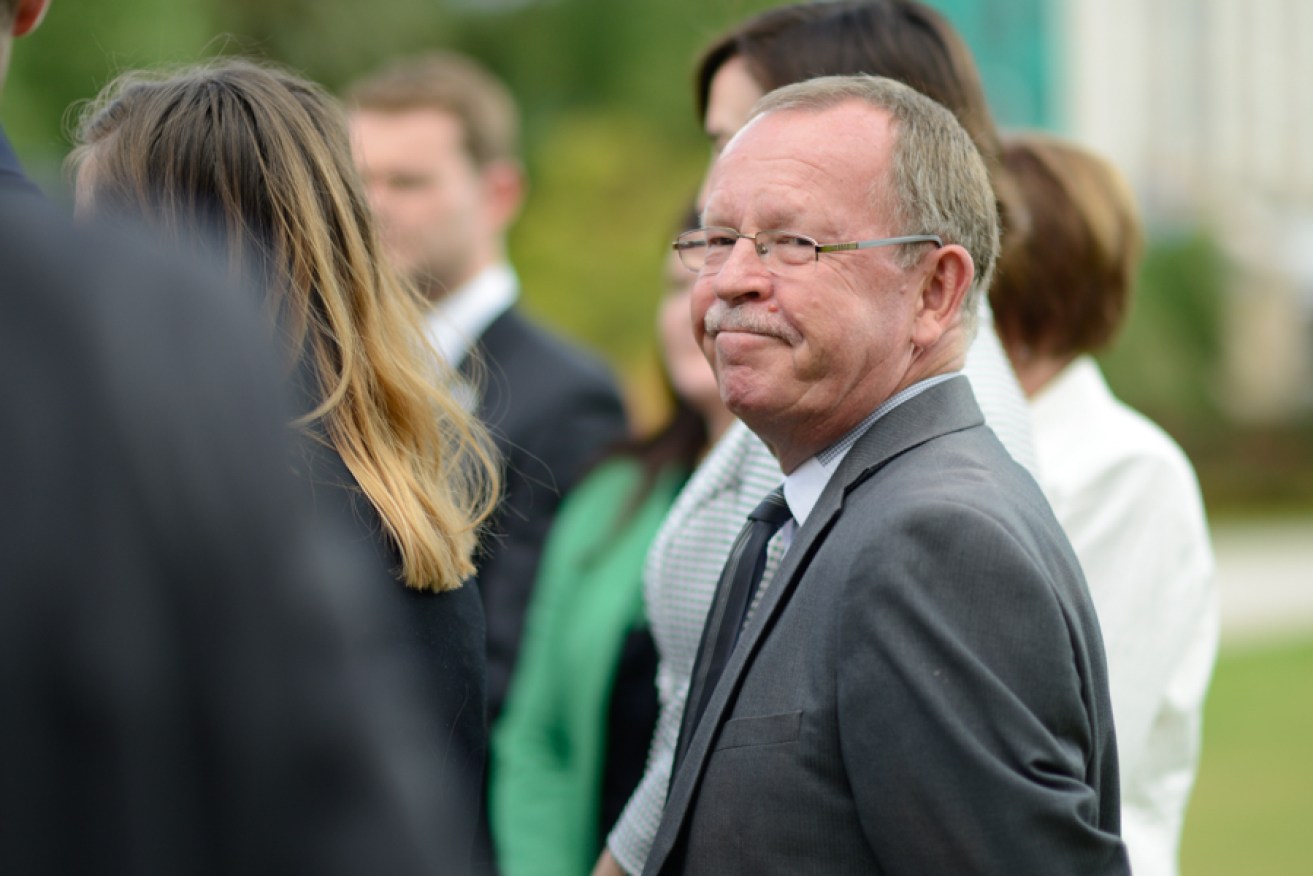LGA supports simpler ways to change council borders
Local councils support proposed legislation to simplify the processes for changing council boundaries, but don’t want to pay any of the related costs.


Local Government Minister Geoff Brock. Photo: Nat Rogers, InDaily.
The Local Government Association has made its submission to State Government consultation on proposed legislative amendments to reform the way council boundaries can be adjusted in South Australia.
The draft Bill, released by Local Government Minister Geoff Brock in August, proposes the creation of an independent commission to assess proposals for boundary changes and make recommendations on how they should move.
The changes would create simplified processes for boundary changes, allowing proposals to be initiated by a single council, the Minister or the public if enough ratepayers support a change.
The LGA, which has been pushing for the new boundaries process to head off persistent calls for council amalgamations, will support key changes in the Bill.
Its submission says that all councils supported the inclusion in the Bill of a principle to support “regionalisation” of functions and services, where appropriate, as an alternative to boundary adjustment.
Councils supported the concept of the Grants Commission taking on the proposed new role of the independent Boundary Adjustments Commission, but didn’t want the task to pass to the State Electoral Districts Commission which “does not have the requisite experience for the types of tasks involved in council boundary adjustments”.
Council feedback was “mixed” on a concept to allow public-initiated proposals for adjusting council boundaries. The draft Bill proposes that these adjustments – not full amalgamations – can be initiated when supported by at least 10 per cent of electors.
The LGA will support the change, with some technical adjustments, with the proviso that “the bar for an elector-initiated proposal should be set sufficiently high to deter vexatious, frivolous or trivial proposals”.
“This should not be less than 10 per cent of voters,” the submission says.
The LGA says its member councils unanimously opposed a proposal for cost-recovery from local government for boundary adjustment.
“All reference to cost recovery should be removed from the Bill,” the LGA submission says.
“The LGA believes that inserting cost recovery into the new model for boundary adjustment will significantly deter take up of the process by councils and is a considerable disincentive to reform.”
LGA president Dave Burgess said there was no evidence that forced council amalgamations would save ratepayers’ money, despite claims by groups such as the Property Council.
“However, based on what we’ve seen interstate, amalgamations haven’t actually delivered savings, and in some cases have led to costly de-amalgamation processes,” Burgess said.
“Communities around Australia don’t support forced amalgamations, and neither do either of our state’s major political parties.”
He said councils could deliver greater savings by “working together on shared services and programs, like they do with the one card library system, collective purchasing of major contracts such as electricity, or creating regional subsidiaries to work together on waste collection and disposal”.
“However, it’s important that there’s a streamlined and independent process in place for councils and communities who do want to investigate boundary adjustment options. That’s why we’ve worked closely with the State Government on their Boundary Adjustment reform Bill.
“Our member councils are supportive of this approach, which will provide local communities with the power to control their own destinies, and retain local decision-making.”
The Property Council, which has been the loudest and most persistent voice calling for council amalgamations, says Brock’s proposed changes are a good start, but don’t go far enough.
Council executive director Daniel Gannon said that if the LGA believed sharing services could provide an economic benefit, then it should accept the argument that amalgamations can intensify the benefit to ratepayers.
“We still think there needs to be wholesale recasting of the boundaries,” Gannon said.
“It’s a good place to start, but a lot more needs to be done in the interests of fairness and equity for ratepayers.
“Restructuring council boundaries is a genuine economic gamechanger.”
He said the “prickly” process of council amalgamations in NSW showed that more needed to be done to explain the benefits to ratepayers.
“The lesson for South Australia is that it needs to done in a more collegiate fashion,” he said.
The laws governing council boundary changes have not changed since the Local Government Act 1999 came into operation.
A Boundary Adjustment Facilitation Panel was formed to “refine” council boundaries after South Australia’s last round of council amalgamations in the late 1990s, however the panel was abolished last year during a State Government purge of boards and committees.
Its functions were transferred to the Minister.




